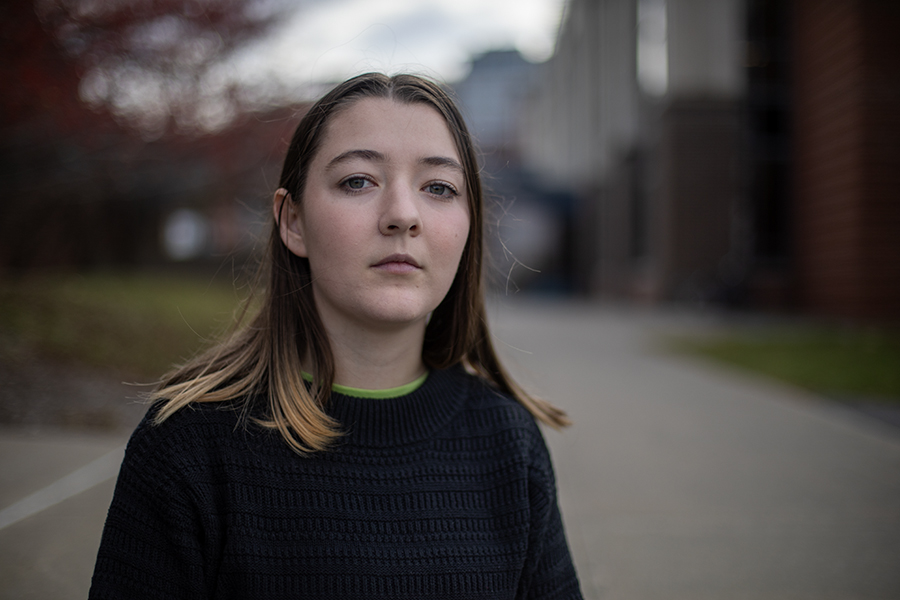Editor’s Note: The opinions in this commentary do not necessarily reflect the views of the editorial board.
Functional public safety resources are crucial to creating an appealing and safe college campus. Being a journalism student at Ithaca College has given me unique insight into college operations; I have consistently found the state of public safety resources to be insufficient and concerning.
When I arrived at the college, I was under the impression that I was on a blue light campus, which meant that when standing at any emergency blue light phone, I should see another. That is the appeal; an ever-present resource to call emergency services if necessary. Blue light phones also cut down on the need to physically patrol campus and serve as an implied deterrent for crime. However, when I started walking around campus, it became extremely apparent to me that there were blue-light-free zones, many of which fell on my regular route from Terrace 11 down to campus.
As a 19-year-old woman with late classes and responsibilities that I knew would leave me outside at night and possibly alone, I was immediately concerned. As a journalism student, I thought of the 5,000 other students who may be affected by this and decided to look into it.
During my reporting, I was told by representatives of the Office of Public Safety and Emergency Management that people generally call from cell phones in emergencies, so installing more blue light phones would be cost-prohibitive. It’s true that nearly everyone has a cell phone today, but cell phones can die, break, be dropped, be lost in a bag or be left at home. Cell phones also do not visually deter crime. I will acknowledge that the college also has the Rave Guardian app, which serves as a mobile blue light. This resource also does not work without a functioning cell phone.
As it turns out, this was just the beginning of things that would make me doubt my safety on the college campus. I will admit that there are existing safety resources that I appreciate, and I would be remiss to not mention that any time I have wanted to speak with the OPS for my reporting, they have been willing to talk to me. However, these systems are also not without their problems. During my first semester at the college, I had a friend call OPS for a safe ride escort at around 3 a.m. After calling, we waited 30 minutes and no ride came. Eventually, my friend called back and dispatch informed her that the officer had come and left when she did not pick up her phone. My friend requested another safe ride and another 30 minutes passed. When she called the OPS again, the dispatcher said she had hung up on the call so they did not send another ride.
There is so much to unpack from this one anecdote. Luckily, my friend was safely inside, but she could have spent an hour waiting outside in the cold for a ride that was never coming, exposed to the elements and to anyone who wanted to harm her. I may not be a police officer, but if I received a call to provide a safe escort and nobody was there when I arrived, I would not assume the person had gotten home safely without any further questioning or observation. To make matters worse, on the same night, a different friend called the OPS for a medical emergency and when she called, she said the phone rang for five minutes before someone picked up. Maybe this terrible evening was just a one-off incident, but public safety can be a matter of life and death, so these resources should always be functional.
In addition to flaws with preventative safety resources on campus, the other side of the problem comes when incidents do happen and are investigated. In Fall 2022 as The Ithacan’s assistant news editor, I reported on antisemitism around campus. Nobody was ever caught related to these incidents and as of October 2022, no suspects had been identified. During my reporting, I learned part of the reason why could be related to the lack of electronic surveillance on campus. At the time of reporting, there were only 190 security cameras on campus — although there were plans to install more. The one unsurveyed area that stood out to me most was the Baker elevator; elevators are effectively a box that once closed and running nobody can exit or enter. There is also no way to see inside the elevator and it paints a scary picture. I absolutely believe in respecting students’ privacy, but a balance must be struck between ensuring privacy and ensuring safety and I believe that has not been reached.
As a female student at the college and as a journalist, I can acknowledge that the OPS tries to make the campus feel like a safe space. What I can also acknowledge is that they are in many ways failing to do so. The college should invest in more blue lights and lights in general, install more security cameras and improve its public safety dispatch services — and these are just the issues I encountered personally or through my reporting as a student. These are terrifying situations and it only takes one night of inefficient support services for something awful to happen.
Clare Shanahan (she/her) is a senior journalism major and The Ithacan’s opinion editor. Contact her at [email protected].









